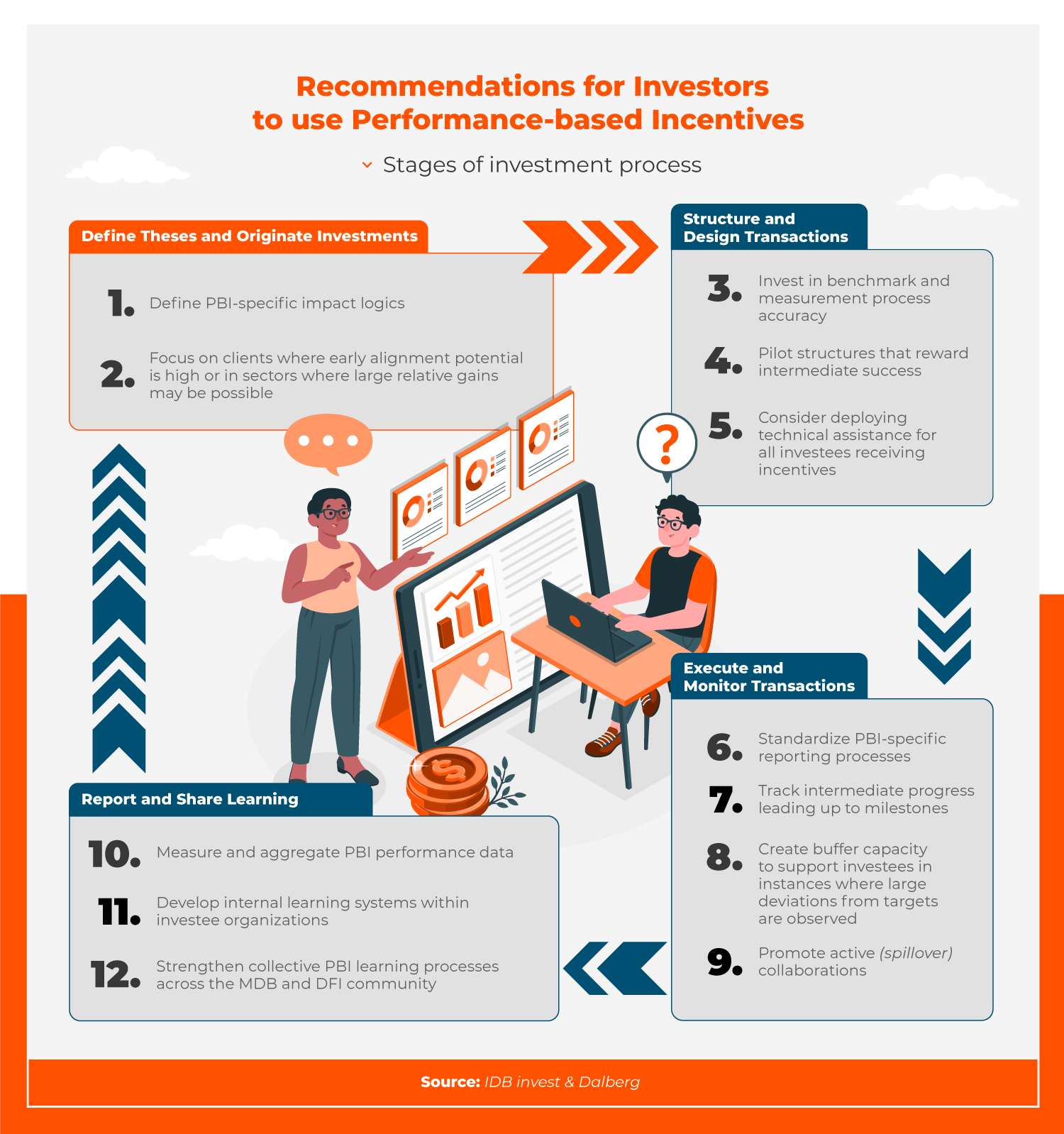How Can We Advance Gender Equality in the Private Sector? Financial Incentives May Help

In some ways, awareness of gender equality—or the lack thereof—in the private sector has never been greater. It’s acknowledged that women in the workforce are underrepresented, especially in leadership positions. And that businesses led or owned by women are less likely to be approved for a loan. This is despite research showing that women repay their loans better than men and that integrating more women executives can be good for business.
Being aware of an issue doesn’t necessarily spur action. The ease of doing business as usual, the perceived risks of making operational changes to be more inclusive, and deep-seated gender biases can hold companies back from moving on this issue. But financial incentives can help.
Performance-based incentives (PBIs) are common in the corporate world. Employees who meet a company’s sales targets may get cash bonuses or stock options. Translated to the development finance world, our clients who reach targets for hiring more women or financing more women-led/owned businesses can get an interest rate adjustment or a grant to buy back interest payments.
The primary goal is to incentivize companies to not only reach gender-related targets but to do so sooner than they would’ve otherwise. And we’ve found that these incentives can be even more powerful when combined with advisory services such as helping clients develop inclusive human resource or procurement policies or tailor financial products for women.
Lessons learned
At IDB Invest we’ve been pioneering the use of gender-focused PBIs since 2015 using blended finance resources from the Canadian Climate Fund for the Private Sector in the Americas (C2F), the Women Entrepreneurs Finance Initiative (We-Fi), and the Clean Technology Fund (CTF). These concessional funds aim to bridge gaps in women’s leadership opportunities, quality employment, and access to training, finance, and markets.
Since evidence on the impact of gender-focused PBIs is limited, we’re excited to share a recent study supported by We-Fi that takes stock of our experience implementing PBIs in operations across Latin America and the Caribbean. It includes seven client case studies from the financial, infrastructure, and corporate sectors and provides recommendations for investors interested in applying these tools.

To start, it seems that PBIs may enhance the likelihood of clients achieving gender-related outcomes and accelerate timelines for reaching targets. For example, we offered Grupo Elcatex, one of the largest textile manufacturers in Central America, a performance grant of up to $210,000 contingent on increasing the integration of women-led/owned small and medium-sized enterprises (WSMEs) into its supply chain. One target focuses on increasing the share of WSME suppliers from 5% in 2020 to 24% in 2027. To help the company achieve this and other targets, our advisory support included developing a strategy to increase procurement opportunities for women and provide training for top management and procurement teams. As of 2022, the company is ahead of schedule, with WSMEs representing 11% of suppliers. The incentive of $30,000 per year has already kicked in twice.
Incentives may also help advance women’s representation in sectors such as renewable energy and construction. For the New Juazeiro solar plant project with Atlas Renewable Energy in Brazil, the company receives an interest rate reduction of up to 1.5% contingent on achieving milestones such as women representing 10% of the construction phase workforce. Atlas met this target two years after the incentive was introduced, in addition to meeting other targets for providing training in STEM careers to women and high school girls. Advisory services such as working with the company to design appropriate milestones were key to ensuring a positive impact for women and girls.
Related Content
- IDB Invest Boosts Women-Owned Enterprises in Brazil
- We Are Half the Population But Less Than One-third of Top Corporate Leaders. What Can Companies Do?
We have also seen how PBIs may shift internal perspectives on gender roles within our client organizations and produce spillover effects across industries. For instance, Elcatex has created a new gender division within the company and a women-led audit program to track strategic gender metrics. At Atlas, the company established partnerships with schools, universities, and institutes to include girls and young women in training programs and facilitate recruitment.
These are just some of the findings from our initial analysis. We’ll continue actively monitoring, evaluating, and sharing the performance of our PBI portfolio with the broader development finance community, including a rigorous causal analysis currently underway.
We see PBIs as the initial spark that may drive lasting behavioral change within an organization, benefiting both gender equality and business performance. Though we look forward to a day when financial incentives are no longer needed to push for women’s economic gains.
Latest posts
- Women, Risks, and Opportunities
- A Woman Entrepreneur Gets a Loan, What Happens Next? Track the Impact to Find Out
LIKE WHAT YOU JUST READ?
Subscribe to our mailing list to stay informed on the latest IDB Invest news, blog posts, upcoming events, and to learn more about specific areas of interest.
Subscribe



